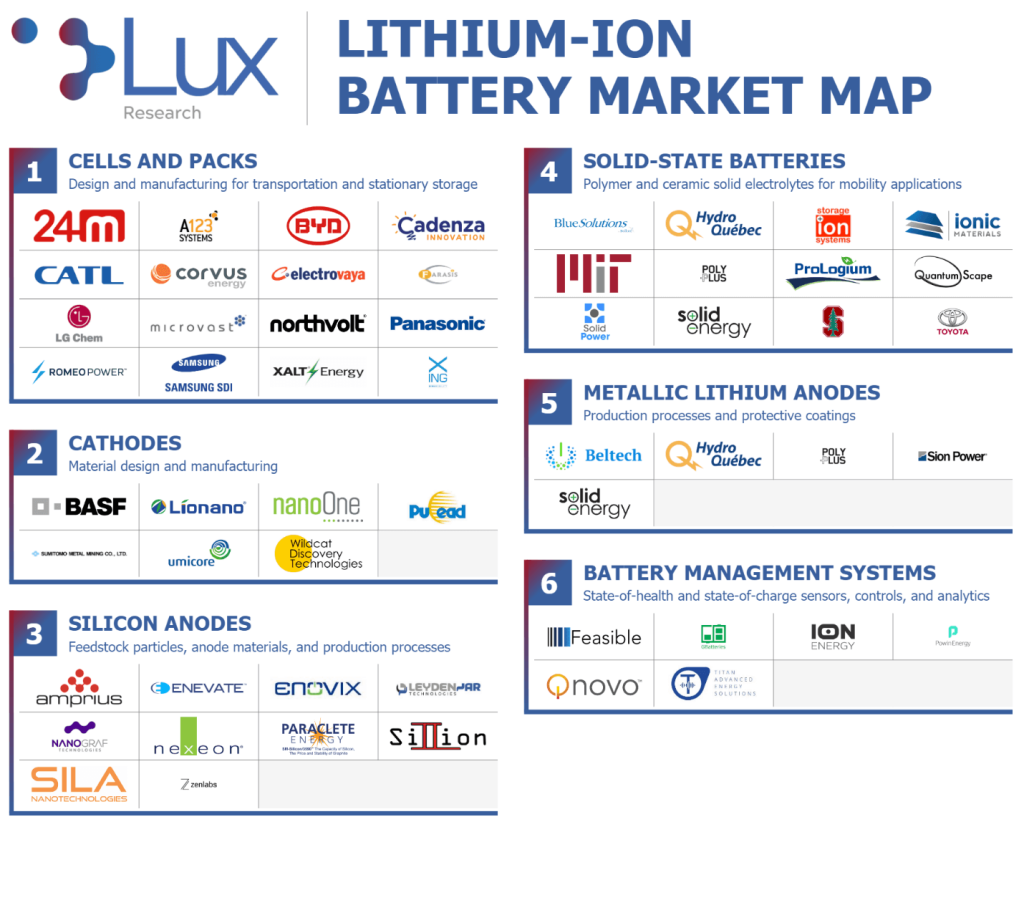The global megatrends toward electrification are undeniable; by 2035, 50% of all vehicles sold will feature an electrified powertrain, and due to their unsurpassed performance, all these electrified powertrains will rely on Li-ion batteries. As Li-ion batteries comprise a variety of technologies – permutations of cathode chemistries, liquid or solid electrolytes, and anode materials – the question is which Li-ion battery chemistry will prevail over the next decade and a half?

To answer that question, Lux Research developed the Li-ion Battery Innovation Roadmap, a cost- and performance-based analysis that answers the question of which Li-ion battery technologies will dominate the market, and when. While widely anticipated technologies like NMC 811 cathodes, silicon anodes, and solid-state batteries do become market leaders, we forecast a dynamic marketplace sensitive not only to the prices of strategic commodities like nickel, cobalt, and lithium, but also to vehicle characteristics and driving patterns. For example, the trend toward higher-energy-density materials like silicon anodes and nickel-rich cathodes seems inescapable; however, higher nickel commodity prices or trading increased vehicle range for faster charging capability can dramatically impact that innovation roadmap. Succeeding in this highly competitive market means being able to identify weak signals and early trends, as well as developing an informed, flexible long-term strategy.
The implications for industry players are significant. Energy storage for mobility will be a $400 billion/year market in 2035, and the pull from that revenue opportunity will be felt up and down the value chain. The need for lithium and nickel will drive innovation in extraction technologies, perhaps even by the experts in extraction today, the oil and gas industry. Downstream, the falling cost of mobility thanks to cheaper, more efficient electric vehicles will open new shared transportation services and mobilize billions of passengers around the world. Altogether, these opportunities represent trillions of dollars in new products and services, but finding a path forward means having a clear view of the Li-ion battery innovation roadmap.
